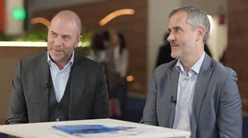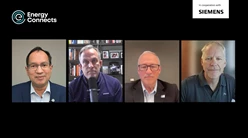Innovation and demand creation needed to power up SAF
Industry leaders and an academic expert convened at ADIPEC yesterday to put a spotlight on sustainable aviation fuel (SAF). They focused on how to scale production while maintaining commercial viability, with a mixture of policies to build a new SAF market at scale.
Middle East’s potential needs policy push
Noura Al Nuaimi, VP Retail Aviation, ADNOC, brought perspective on the current situation in the Middle East, its comparison with other world regions and its real potential for SAF production and use.
“Europe has firm targets of reaching 70 % of SAF by 2050,” she said. “Asia is following with firm mandates as well with private investment to really strive and upscale SAF production.”
“If we look at the Middle East as a hub, we are leading in investments and financing,” she continued. “However, we do not see demand and policies to pick up the demand.”
Despite the lack of mandates in the region, there are approaches that can work to spur demand in the region. Al Nuaimi outlined several approaches.
“The potential is great,” she said.
At the end of the day, you've got to build. That's how you make it reliable and available - you just build. And that means we have to have permits go faster, we have to have people taking long-term PPAs, and we have to just increase our investment.
Electrons are key
Dr. Jennifer Holmgren, CEO, LanzaTech, pointed to the important connection of clean power to sustainable aviation fuel.
“Clean power is absolutely the key to conversion,” she said. “The electrons are how we are going to convert CO2 because that's how we also make hydrogen.”
“Electrons are the key to the future of molecules,” she added.
Holmgren emphasised that is it very important to just begin to deploy new fuels.
“At the end of the day, you've got to build, that's how you make it reliable and available - you just build,” she said.
“And that means we have to have permits go faster, we have to have people taking long-term PPAs, and we have to just increase our investment.”
Complementary tech
Horst H. Mahmoudi, CEO & Executive Chairman, Smartenergy, spoke about the importance of partnerships to launch a nascent industry.
“Nowadays as we see volumes are still very low,” he said. “And I think the only way to push it forward is through real partnerships.”
“Alliances that are also able to overcome certain periods, like for example less attractive periods for sustainable fuels.”
Steve Kelly, President and GM, 1PointFive International, discussed the importance of direct air capture as an important complement to SAF.
“As a capture developer, what we offer is a range of solutions that are complementary to the decarbonisation of an industry like aviation,” he said. “It's a full range,” he continued.
“We can deal with the residual emissions that exist with the SAF that's being used.” He said that the various roadmaps to get to net zero aviation shows that there will be something from 500 to 800 million tonnes of residual emissions to deal with.
His company is focused on that while also building a sustainable feedstock for e-fuel, in the form of a sustainable supply of CO2 that's atmospherically sourced from the use of any fuel.
Optimistic outlook
Dr. Steven Griffiths, Professor and Vice Chancellor for Research, American University of Sharjah, emphasised the important of development in the research and development for SAF.
“I always get asked about R & D and I always tell people that, in an area like SAF, we talk about R & D & D & D - research, development, demonstration, and deployment,” he said.
“Because really it's the demonstration and deployment that matters.”
Griffiths said that when he’s working with organisations he brings focus on several concerns. One is the feedstock, as the availability and sustainability of the feedstock are critically important. Likewise, the scalability of the technologies to convert the feedstock has to be thought about, such that developers are able to convert feedstocks through various technologies.
Griffiths and the other panellists conveyed optimism about the future of SAF, with the current global push and mandates in various parts of the world. The exciting part is figuring out the mixture of technologies and forms of fuel that will eventually take hold.





